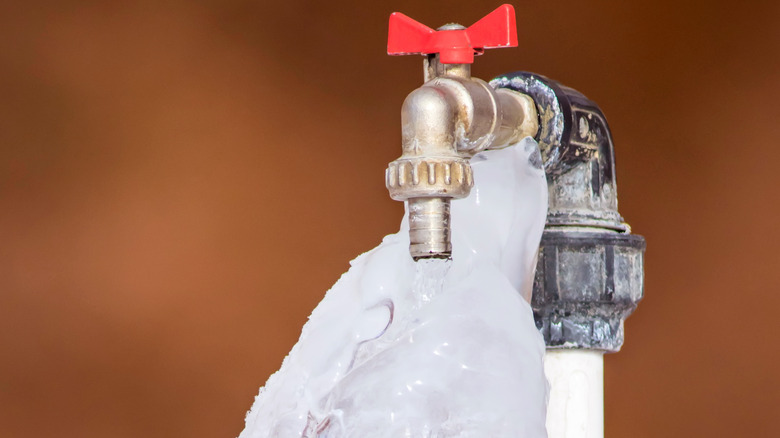Avoiding Frozen Pipes: Effective Methods for Cold Weather
Avoiding Frozen Pipes: Effective Methods for Cold Weather
Blog Article
We have encountered this article pertaining to Prevent Frozen Pipes directly below on the net and felt it made good sense to talk about it with you on this site.

Cold weather can damage your pipes, specifically by freezing pipes. Right here's just how to prevent it from taking place and what to do if it does.
Introduction
As temperatures drop, the danger of icy pipes increases, potentially leading to costly repair work and water damages. Comprehending how to stop frozen pipelines is vital for property owners in cold environments.
Prevention Tips
Insulating susceptible pipelines
Cover pipelines in insulation sleeves or make use of warm tape to protect them from freezing temperature levels. Focus on pipes in unheated or outside areas of the home.
Heating techniques
Keep indoor spaces effectively warmed, particularly areas with pipes. Open up closet doors to allow cozy air to distribute around pipes under sinks.
Just how to determine frozen pipelines
Seek decreased water circulation from taps, uncommon odors or sounds from pipes, and visible frost on revealed pipes.
Long-Term Solutions
Structural changes
Take into consideration rerouting pipelines away from outside walls or unheated locations. Add additional insulation to attic rooms, cellars, and crawl spaces.
Upgrading insulation
Buy high-quality insulation for pipelines, attics, and walls. Correct insulation assists keep regular temperature levels and minimizes the threat of frozen pipes.
Securing Outdoor Plumbing
Yard tubes and exterior taps
Disconnect and drain pipes garden tubes prior to wintertime. Mount frost-proof spigots or cover outside taps with protected caps.
Understanding Frozen Pipelines
What causes pipelines to ice up?
Pipes freeze when exposed to temperatures listed below 32 ° F (0 ° C) for extended durations. As water inside the pipes ices up, it increases, putting pressure on the pipe walls and possibly creating them to rupture.
Dangers and problems
Frozen pipes can bring about supply of water disturbances, home damage, and costly repairs. Ruptured pipes can flood homes and create comprehensive architectural damages.
Indicators of Frozen Pipeline
Determining frozen pipelines early can stop them from breaking.
What to Do If Your Pipes Freeze
Immediate activities to take
If you think frozen pipes, maintain faucets available to soothe pressure as the ice thaws. Utilize a hairdryer or towels soaked in warm water to thaw pipelines slowly.
Final thought
Stopping icy pipelines calls for proactive measures and fast responses. By recognizing the reasons, indications, and preventive measures, home owners can protect their pipes throughout winter.
5 Ways to Prevent Frozen Pipes
Drain Outdoor Faucets and Disconnect Hoses
First, close the shut-off valve that controls the flow of water in the pipe to your outdoor faucet. Then, head outside to disconnect and drain your hose and open the outdoor faucet to allow the water to completely drain out of the line. Turn off the faucet when done. Finally, head back to the shut-off valve and drain the remaining water inside the pipe into a bucket or container. Additionally, if you have a home irrigation system, you should consider hiring an expert to clear the system of water each year.
Insulate Pipes
One of the best and most cost-effective methods for preventing frozen water pipes is to wrap your pipes with insulation. This is especially important for areas in your home that aren’t exposed to heat, such as an attic. We suggest using foam sleeves, which can typically be found at your local hardware store.
Keep Heat Running at 65
Your pipes are located inside your walls, and the temperature there is much colder than the rest of the house. To prevent your pipes from freezing, The Insurance Information Institute suggests that you keep your home heated to at least 65 degrees, even when traveling. You may want to invest in smart devices that can keep an eye on the temperature in your home while you’re away.
Leave Water Dripping
Moving water — even a small trickle — can prevent ice from forming inside your pipes. When freezing temps are imminent, start a drip of water from all faucets that serve exposed pipes. Leaving a few faucets running will also help relieve pressure inside the pipes and help prevent a rupture if the water inside freezes.
Open Cupboard Doors
Warm your kitchen and bathroom pipes by opening cupboards and vanities. You should also leave your interior doors ajar to help warm air circulate evenly throughout your home.

I ran across that review about How to Prevent Your Pipes From Freezing when doing a lookup on the web. Sharing is nice. Who knows, you may just be helping someone out. I praise you for being here. Kindly stop by our website back soon.
Make An Appointment Report this page